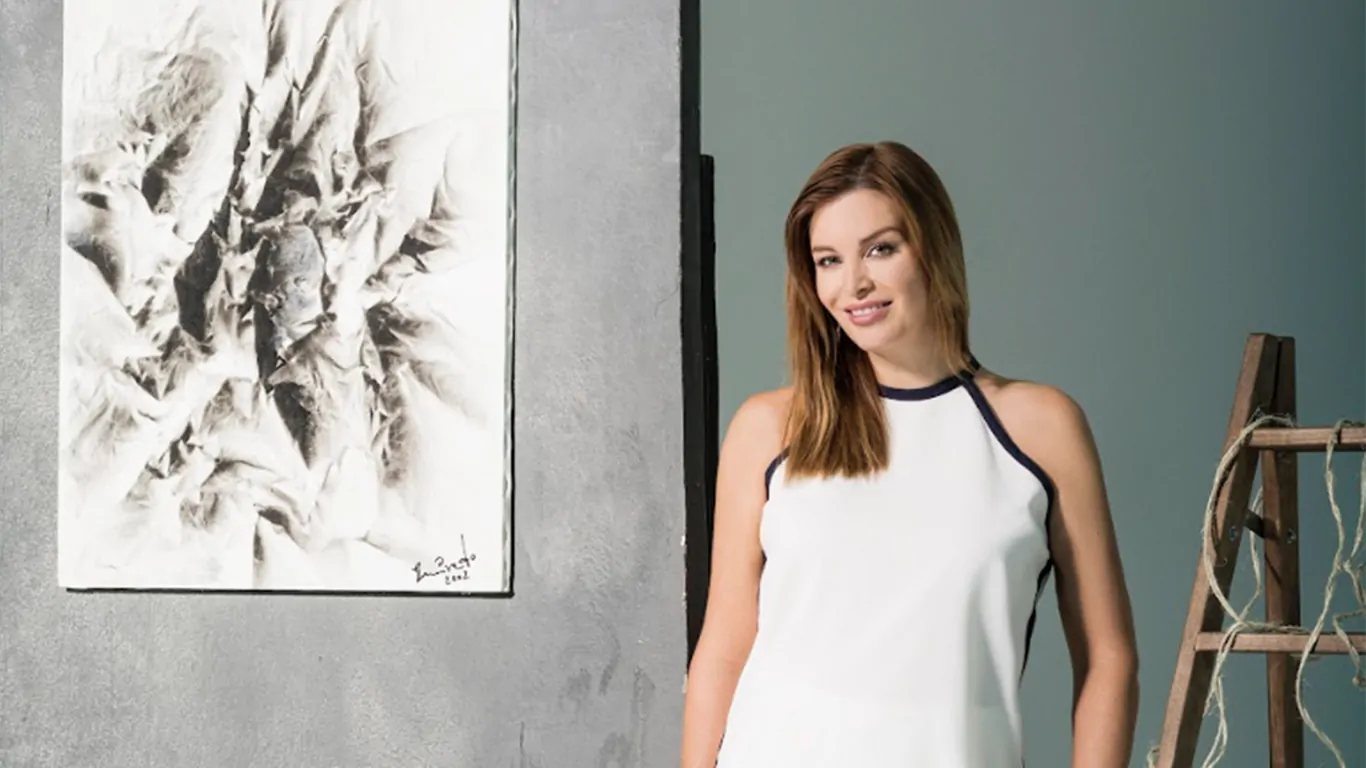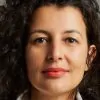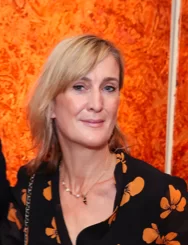Catalina Guirado, CEO of the Guirado Estate, talks about the exhibition ‘Rediscovered Geniuses: Juan Antonio Guirado and Igor Gorsky’ at Red Eight Gallery.
Juan Antonio Guirado’s daughter Catalina Guirado is a model, TV presenter and former star of ‘I’m a Celebrity’. After her father’s death she inherited the Guirado Estate, and has spent many years arranging international exhibitions of his paintings to preserve his legacy. Guirado was a Spanish Surrealist artist who spent time in Australia and is considered Spain’s leading master painter in the school of “Intrarealism”.
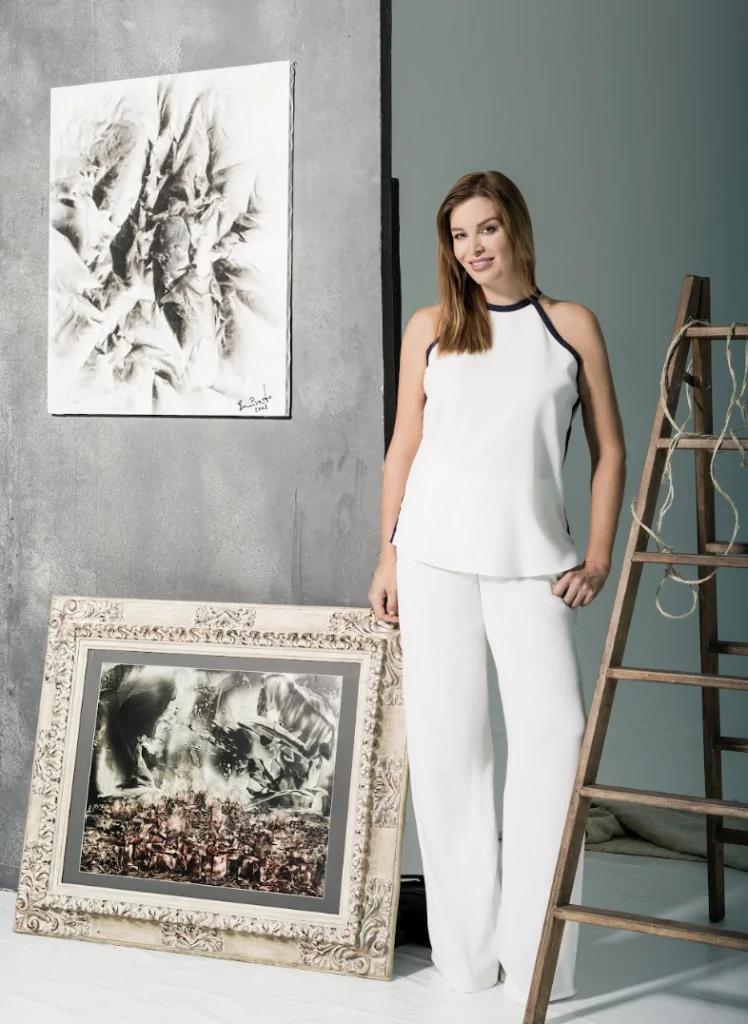
Previously unseen paintings by Guirado will be exhibited alongside paintings of Igor Gorsky, a Greek Abstract Expressionist who moved to the USA and invented a unique pouring technique. The exhibition is at Red Eight Gallery from 4th October to 14th November, 2024 at Red Eight Gallery in London’s historic Royal Exchange.
Lee Sharrock: Your father was a Spanish Surrealist artist who was considered to be Spain’s leading master painter in the school of “Intrarealism”. Can you give some insight into ‘Intrarealism’?
Catalina Guirado: Intra-realism is not a widely known school and is a sub-form of Surrealism that was created in 1967 by the creator of the movement Abel Vallnitjana in Barcelona. It soon attracted a strong following of artists across the world of all genres from painters, sculptors, and poets to filmmakers and writers including Federico Fellini and writer J D Salinger (who became a collector of Guirado along with academy award-winning director John Schlesinger) At the core of Intrarealism lies a fascination with the unknown.
Artists of this movement sought to capture the essence of dreams, emotions, and thoughts that transcend the tangible world. Through their artworks, they aimed to transport the audience into a realm where imagination reigns supreme, blurring the lines between the known and the enigmatic.
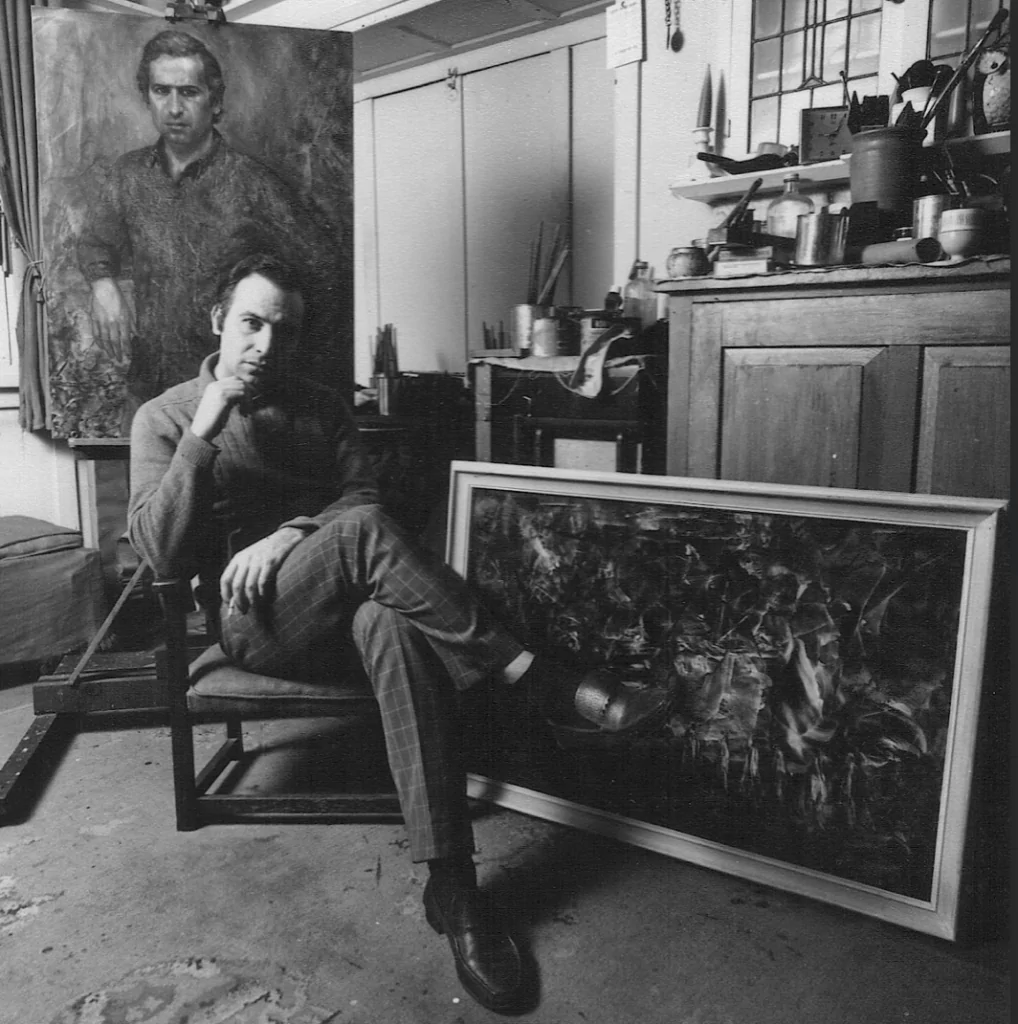
Image Courtesy Guirado Estate
Guirado only decided that his paintings fit this school perfectly later in life after being categorized in surrealism and Essentialism in the 1960s and 70s. It was in the 80s that he learned about Intrarealism from fellow Spaniard and art critic Manuel Quintanilla who wrote the book ‘El Pintor Contemporaneo Andaluz Juan Antonio Guirado’. The rediscovery of Intrarealism has proved interesting to art academics like Editor in Chief ABC Culture Laura Revuelta, and Professor Paloma Rodera who created an Unnd Mooc online course in 2017 that covers the history and Guirado’s relevance to Intrarealism.
After he immigrated to Australia in the 1950s due to the political climate, your Father became interested in Oriental religions such as the Hindu Philosophy Vedanta. How did he reflect this increasing interest in religion and spirituality in his paintings?
Catalina Guirado: Guirado was fascinated by the Veda and metaphysics. He was an enlightened individual who could see things others didn’t and could channel his third eye as he painted. Being away from the darkness of Spain and its Catholic authority as well as Franco’s dictatorship at that time meant he was allowed to explore new perspectives freely.
The landscape he saw in Australia affected him strongly as it was so different from Andalucía. In an interview conducted by Patricia Johnson in 1970, which was featured in a weekly Australian magazine, Guirado revealed that “My pictures in Australia were full of light, not many Australians realized how many things in their land had the quality of “soul”. colours that he used in Australia compared to those used in Spain ‘were radically different […].
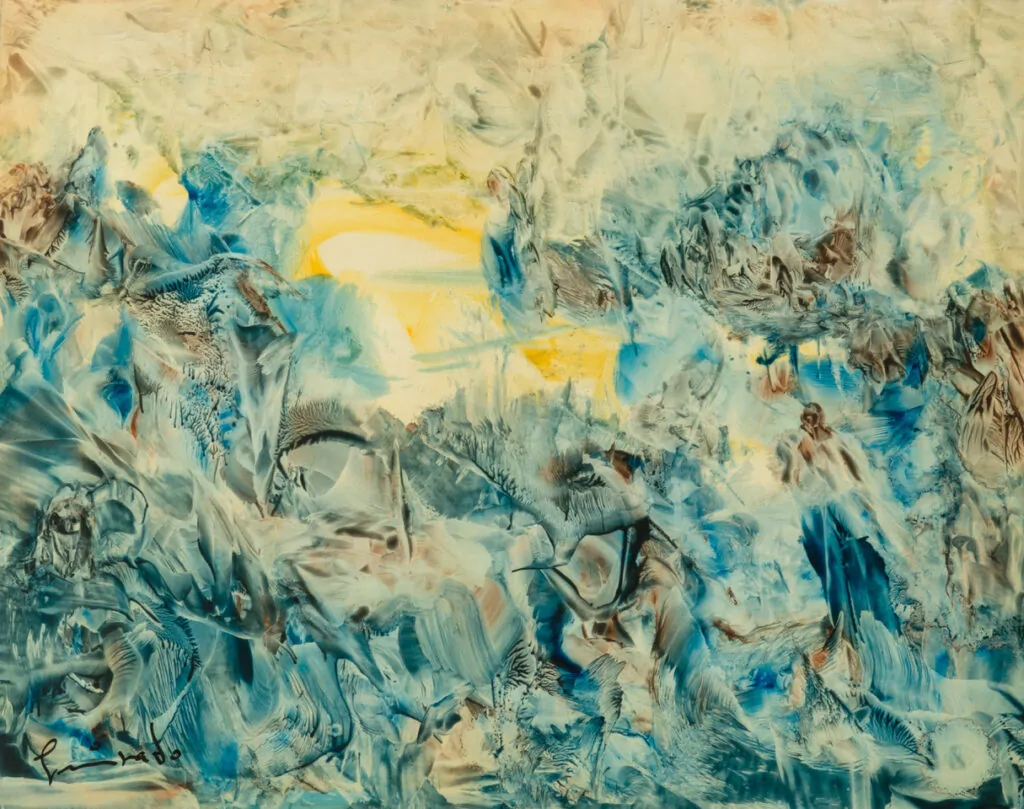
52 x 65.5 mixed media on paper
Image Courtesy Guirado Estate
My pictures in Australia were full of light, and I used colours such as blue, white, and yellow. In Spain, all my pictures were in shades of brown and grey.’ On returning to Spain Guirado became great friends with the famous Spanish Yogi Ramiro Calle for whom he painted a series of ‘Karma’ paintings to hang in his Yoga studios in Madrid.
Guirado meditated daily and if you look at his paintings there are often tunnels of white light and shadow-like figures resembling spirits that represent the different realities and the difference between man, body, and soul. One of my favourite paintings is a self-portrait that hangs in my living groom of Guirado’s profile as an aura showing the shaft of white light connecting his crown chakra to the universe. When asked once by a journalist how best to view his work he said ‘It is the type of painting one has to see with the third eye, the eye of the mind’.
Juan Antonio Guirado was one of the most represented Spanish contemporary artists in museums including the National Museum Reina Sofia and the National Museum of Fine Arts in Valletta, and collectors of his art included King Hussein of Jordan, J.D. Salinger, and John Schlesinger. He also received multiple awards including the gold medal at the El Grollo awards at the Venice Biennale in 1976. Since you inherited the Juan Antonio Guirado Estate, what exhibitions have you organised of your Father’s art, and why haven’t you exhibited his work in the UK for so long?
Catalina Guirado: I started working on re-introducing Guirado’s work internationally in 2011 a year after he died. I wanted to see what the reaction was to his paintings as though I had grown up surrounded by his art and attending exhibitions I didn’t pay it much attention as a child. I used my rent money to buy frames for 12 paintings on paper that I had taken to Los Angeles for my home and was kindly given a gallery space between shows for a one-night private view. The reaction to the art was staggering and it became my full-time occupation.
I was lucky enough to find art benefactors to help cover the huge costs and I had a very small team of brilliant women working with me in Spain and the UK. The process of reintroducing an overlooked artist, especially one who is deceased, is long and has to be done properly to gain recognition amongst academics. Being Spanish it made sense to start there. The first major show was in Madrid in 2015 at Pons Foundation in Madrid and included an educational night where Spain’s top art academics including Pablo Melendo and Laura Revuelta held a panel talk to Art history students.
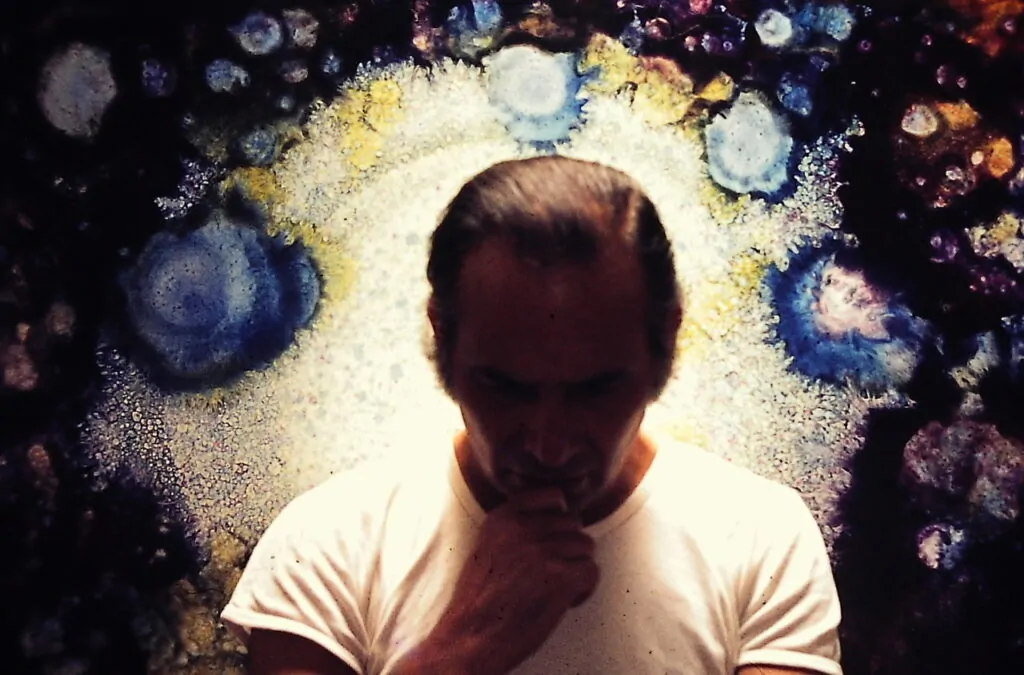
Courtesy Guirado Estate
The exhibition VIP night goes down in history as an amazing event in art with Vanity Fair covering it. No one left the gallery until midnight it was such a success! We then held an exhibition during ARCO 2017 showing Guirado’s Environmental paintings and partnering with Green Peace to promote sustainability and environmental issues. This was followed by a solo exhibition of the international guest artist at Coral Gables Museum in Florida where we also premiered a virtual reality installation using Guirado’s paintings by Los Angeles-based VR Studio kicking off Miami Art Week and Art Basel.
Finally, in 2018, Guirado was honoured by the University of Jaén, our hometown in Andalucía, to be inducted into the prestigious Cesareo Rodriguez- Aguilera foundation and exhibited alongside works in the collection including Picasso, Miro, and Tapies. After the pandemic, my priorities shifted as I no longer had benefactors helping and I decided it was time to start working with galleries starting with London as it is the centre of the art world and also where Guirado was often exhibited during the 1970’s. I hope that we can introduce Guirado to a new generation of collectors who appreciate the strong provenance and genius of the work, after all, it is more relevant than ever in today’s society.
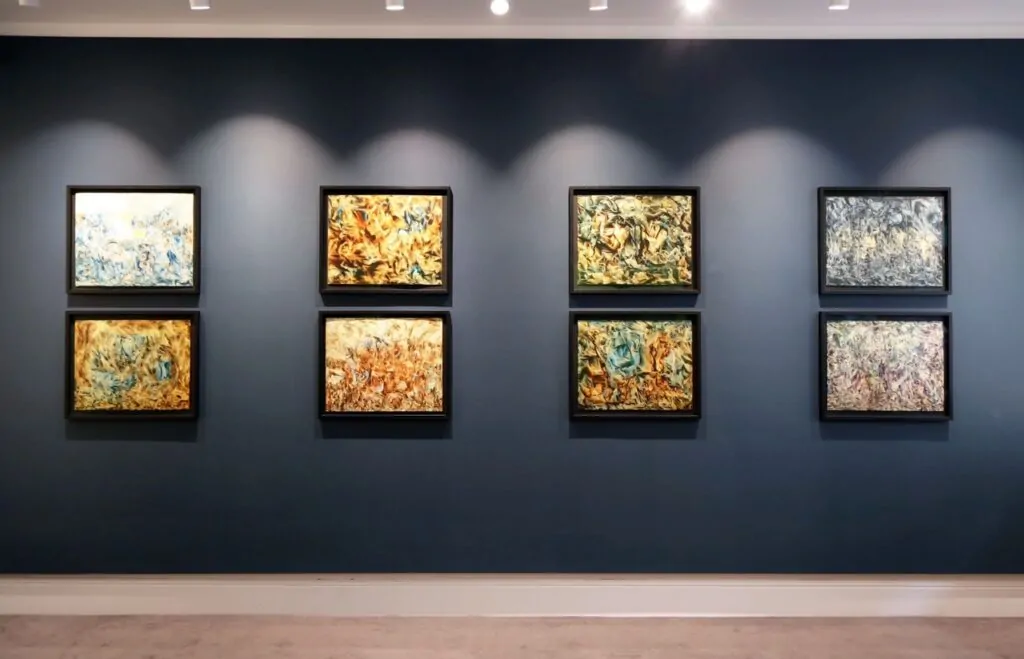
Juan Antonio Guirado
Image Courtesy Guirado Estate
Your Father’s passion for reflecting environmental and spiritual issues in his paintings was rather prophetic, considering the increasing unrest and fear of climate change in the world today. Why did you choose paintings from his 1990-2010 ‘Vision’ series for the London exhibition?
Catalina Guirado: I wanted to start with his most contemporary and previously un-exhibited paintings as he considered these to be amongst his finest works. I feel they might resonate with new collectors for their abstract surreal beauty and the way you can look at one painting a thousand times and see something different. It is like gazing into multiple kaleidoscopic universes and I feel that many collectors are looking for something more interesting and intelligent that will be a conversation piece at dinner parties. His ‘Vision’ series reflects his mantra of opening the third eye and these paintings are his most optimistic about humanity.
As I mentioned Guirado painted in brown symbolizing oppression and depression whilst blues, yellow, and bright colours symbolize light and spirituality. The world is pretty messed up right now so I see these paintings as messages of infinite hope.‘Rediscovered Geniuses: Juan Antonio Guirado and Igor Gorsky’ is at Red Eight Gallery, Royal Exchange, London from 4th October to 14th November.
‘Rediscovered Geniuses: Juan Antonio Guirado and Igor Gorsky’ is at Red Eight Gallery, Royal Exchange, London from 4th October, 2024 to 14th November, 2024
©2024 Catalina Guirado, Guirado Estate President


